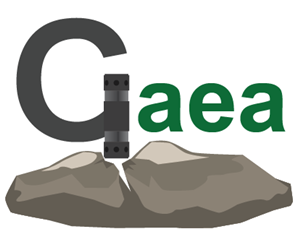The difference and working principle of round teeth and pointed teeth of down-the-hole drill bits
1. Appearance and structure
Circular teeth:
The shape of circular teeth is similar to a part of a sphere, and its surface is relatively round. This shape makes the contact area of circular teeth relatively large when they come into contact with rocks. The edges of circular teeth do not have sharp edges and corners, but are arc-shaped transitions. For example, in some down-the-hole drill bits used for soft rock drilling, the diameter of circular teeth may range from a few millimeters to more than ten millimeters, and its size will also be adjusted according to the overall size of the drill bit and the specific application scenario.
Pointed teeth:
Pointed teeth have obvious tips, and their shape is similar to a part of a cone. The tip angle of the pointed teeth is sharper, which can concentrate greater pressure on a smaller area. The length and thickness of the pointed teeth will also vary depending on the design purpose of the drill bit. For example, in down-the-hole drill bits used for hard rock drilling, the pointed teeth may be designed to be longer and thicker to enhance their ability to crush hard rocks.

2. The principle of crushing rocks
Circular teeth:
Circular teeth mainly crush rocks by extrusion and grinding. Due to its large contact area, when hammering the rock, the round teeth will exert a greater pressure on the rock surface, causing the rock to deform and break under the pressure. This crushing method works better in soft rocks because the compressive strength of soft rocks is relatively low. For example, when drilling soft rocks such as shale, the round teeth can gradually crush the soft rock like a road roller. At the same time, during the rotation process, the round teeth will also grind the broken rock particles to further refine the rock cuttings, which is conducive to subsequent slag removal.
Sharp teeth:
Sharp teeth mainly rely on the principles of puncture and splitting to break rocks. When hammering the rock, the tip of the sharp teeth can concentrate its force to penetrate the rock and form cracks in the rock. As the drill bit rotates and continues to hammer, these cracks will continue to expand, eventually leading to rock crushing. In the drilling of hard rocks such as granite and basalt, this crushing method of sharp teeth is very effective. The sharp teeth are like wedges, splitting hard rocks, and their crushing efficiency is higher than that of round teeth in hard rocks.
3. Applicable rock types
Circular teeth:
Circular teeth are more suitable for soft rocks, such as shale, clay rock, marl, etc. These rocks have low hardness and low compressive strength, and the extrusion and grinding methods of circular teeth can adapt well to their characteristics. In soft rock drilling, circular teeth can avoid excessive rock crushing, reduce energy consumption, and effectively control the shape and size of the borehole because its crushing process is relatively gentle.
Sharp teeth:
Sharp teeth are mainly used for hard rocks, such as granite, quartzite, basalt, etc. These rocks have high hardness and high compressive strength. The piercing and splitting action of the sharp teeth can effectively break through the hard shell of the rock and penetrate deep into the rock for crushing. Using sharp-tooth drill bits can achieve higher drilling speeds in hard rocks, but because hard rocks also wear the sharp teeth more severely, the service life of the sharp-tooth drill bits may be affected to a certain extent.
4. Wear and service life
Circular teeth:
In the process of soft rock drilling, due to the low hardness of the rock, the wear of circular teeth is mainly the gradual wear of the surface. Because circular teeth work by extrusion and grinding, the wear is relatively uniform. Under normal use, the service life of round teeth may be relatively long, especially in the case of drilling soft rock. For example, in a project of continuous drilling shale, the round tooth drill bit may be used for a long time, but only the radius of the round teeth is slightly reduced, and it can still maintain a certain working efficiency.
Sharp teeth:
When drilling hard rock, the tip of the sharp teeth is easily worn due to the violent way of breaking the rock. The wear of the sharp teeth is mainly concentrated on the tip and side. As the drilling progresses, the tip of the sharp teeth will gradually become blunt. Once the sharp teeth become blunt, their ability to pierce and split the rock will decrease, and the drilling efficiency will also decrease. Therefore, the service life of the sharp tooth drill bit in hard rock drilling is usually shorter than that of the round tooth drill bit in soft rock drilling, and it needs to be replaced or repaired more frequently.
5. Deslagging characteristics
Spherical teeth:
During the working process, the round teeth will produce relatively more fine rock chips due to the way they break the rock. In terms of deslagging, these fine rock chips are more easily taken out of the borehole under the action of flushing media (such as compressed air or mud). The design of the slag discharge channel of the round tooth drill bit can also be relatively small, because the rock cuttings are small and not easy to block the channel.
Sharp teeth:
The rock cuttings produced by the sharp teeth after breaking the rock are relatively large. When discharging, there needs to be sufficient flushing medium flow and speed to discharge these larger rock cuttings out of the borehole. The slag discharge channel of the sharp tooth drill bit is usually designed to be relatively wide to prevent rock cuttings from clogging and affecting drilling efficiency.





